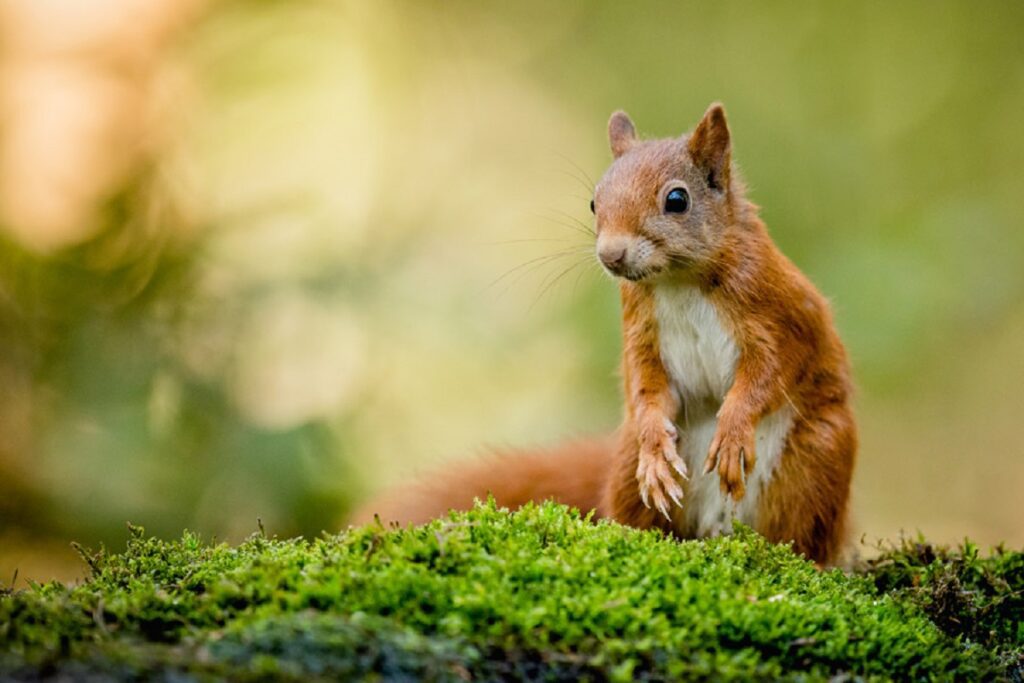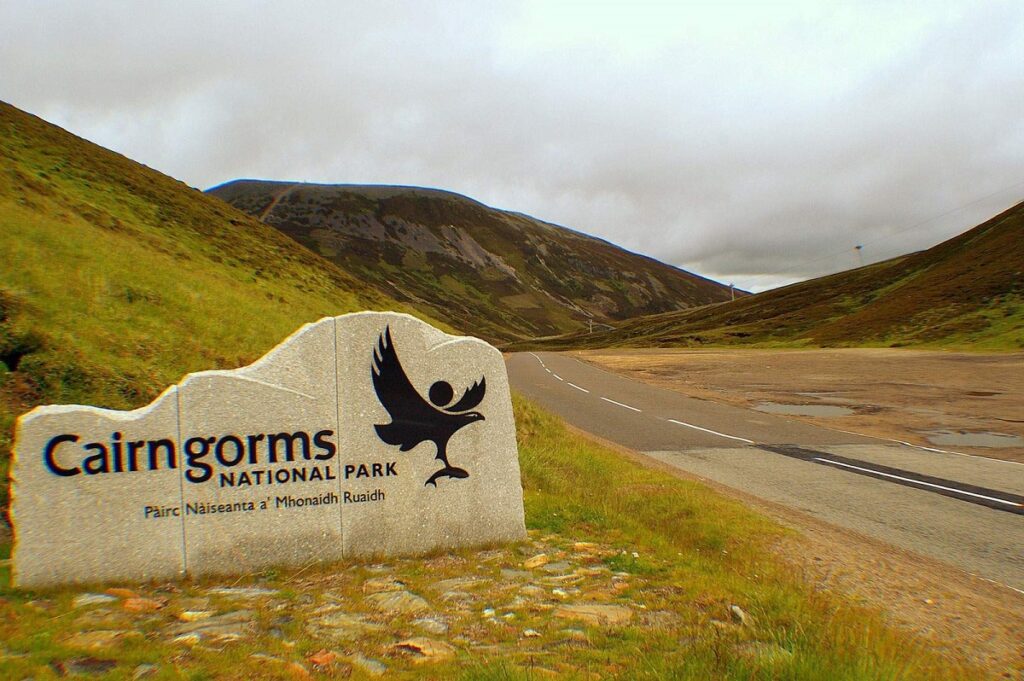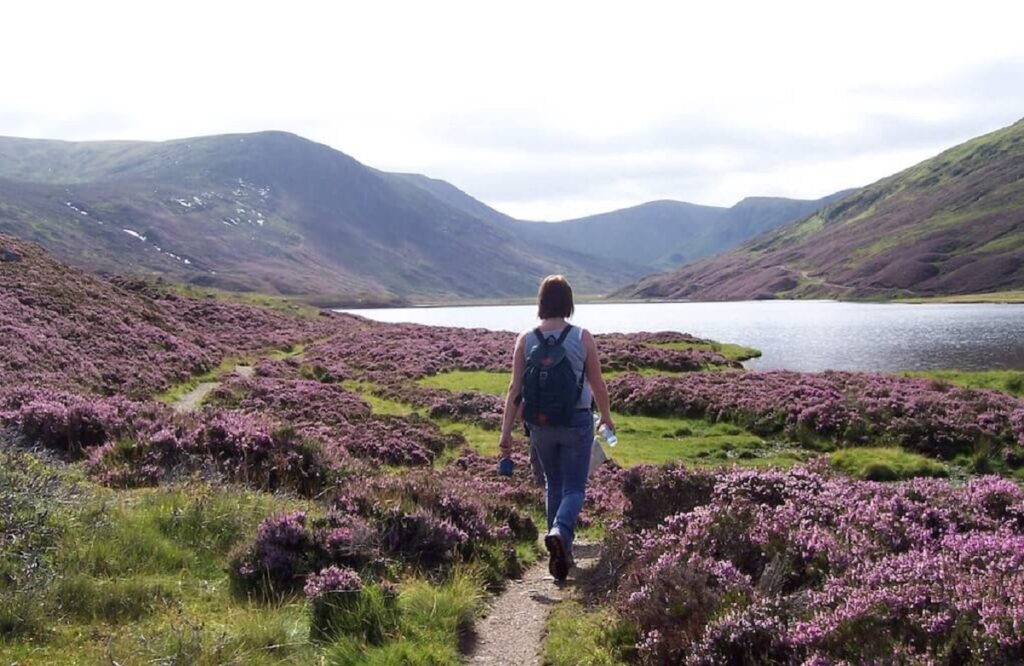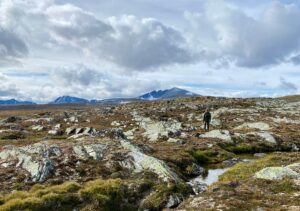Nestled in the rugged Scottish Highlands, Cairngorms National Park is the largest national park in the United Kingdom. It’s a sanctuary of sweeping moorlands, ancient pine forests, snow-capped mountains, and charismatic wildlife. It’s a place where natural beauty and cultural heritage converge, offering visitors a blend of adventure, tranquility, and timeless Scottish charm.
At the heart of the park lies the Cairngorm Mountain range, one of the UK’s few true Arctic-alpine environments. Here, summits like Ben Macdui—the second-highest peak in Britain—beckon hikers and climbers with challenging trails and breathtaking vistas. In winter, the region transforms into a hub for snow sports, with Cairngorm Mountain and The Lecht providing facilities for skiing and snowboarding.
But even in summer, the rolling hills, lochs, and glens invite exploration by foot, bike, or canoe. With so much to offer, it’s no surprise that Cairngorms is such a revered destination for nature enthusiasts. Here’s our guide to Cairngorms National Park;
Please Download Our Mobile App here.
Overview of Cairngorms National Park
Located in the northeast of Scotland, Cairngorms spans an impressive 1,748 square miles (4,528 square kilometers), making it the largest national park in the United Kingdom. This expansive wilderness is anchored by the Cairngorms mountain range and its surrounding foothills, a dramatic landscape that draws outdoor enthusiasts.
Home to nearly 20,000 residents, the park is more than just a scenic escape—it’s a living region with vibrant communities woven into its natural fabric. The mountains, often compared to Norway’s Hardangervidda National Park for their vast upland plateaus, rugged outcrops, and dramatic cliffs, serve as a magnet for hikers, mountaineers, and ice climbers alike.
Winding through this alpine terrain are three major rivers—the Dee, the Don, and the Spey. The latter being Scotland’s second-longest river—offering both scenic beauty and vital ecosystems. With its diverse geological features and wealth of climbing opportunities, Cairngorms remains a premier destination for those seeking to explore the raw and untamed beauty of the Scottish Highlands.
Wildlife in Cairngorms National Park

Cairngorms National Park is one of the most important wildlife refuges in the United Kingdom, offering sanctuary to a remarkable variety of animals across its vast landscapes. Among its most prized inhabitants are the elusive Scottish wildcat, the soaring golden eagle, and the ever-charming red squirrel.
The park contains the largest remaining expanse of Caledonian pine forest, a crucial habitat for many species that are rare or endangered in the UK. Bird enthusiasts are drawn to the region for sightings of capercaillie, ospreys, Scottish crossbills, crested tits, snow buntings, and ptarmigans, some of which thrive only in the Highlands.
On the forest floor and in the rugged uplands, mammals like pine martens and mountain hares go about their lives largely undisturbed. Herds of red deer roam freely through the glens. With its mix of woodland, moor, and mountain ecosystems, the park supports species specially adapted to harsh alpine conditions.
Best Time to Visit Cairngorms National Park
The best time to visit Cairngorms National Park depends on what kind of experience you’re looking for, but spring and autumn generally strike the perfect balance. In spring (from April to May), the landscape comes alive with blooming wildflowers and the return of wildlife, making it ideal for hikers and nature lovers.
Autumn, particularly in September and October, offers a colorful spectacle as golden birch leaves contrast with the deep green of ancient pines. It also marks the beginning of the mushroom foraging season. These shoulder months are quieter than summer, providing a more peaceful experience and comfortable weather.
Summer brings warmer temperatures, but it’s also the busiest time of year and comes with the nuisance of midges, especially in June and July. Winter (November through March) transforms the park into a snowy wonderland perfect for skiing and snowboarding. However, visitors should be ready for harsh conditions and much shorter daylight hours.
Getting to Cairngorms National Park

Getting to Cairngorms National Park from Glasgow is relatively straightforward, with options by car, bus, or train. Driving is the fastest and most flexible way to reach the park, taking roughly 2 hours and 30 minutes. The recommended route heads northeast on the M80 toward Stirling, then continues along the A9 through Perth and into the national park, covering a distance of about 130.5 miles.
For those relying on public transport, several bus operators, including FlixBus and Megabus, run regular services from Glasgow’s Buchanan Bus Station. These journeys typically last around 3 hours and 10 minutes. Alternatively, train travel offers a scenic but slightly longer option.
Passengers can depart from Glasgow Queen Street station, transferring at Stirling or Perth to connect with a train bound for Aviemore, one of the key towns within the park. This rail journey, including transfers, usually takes around 4 hours, offering a relaxed way to admire the Scottish countryside en route.
Other Activities in Cairngorms National Park
Cairngorms National Park offers an exceptional range of outdoor activities, with hiking taking center stage. The park features 55 mountains over 3,000 feet, known locally as Munros. Each presents a unique opportunity for walkers and climbers to summit and enjoy panoramic views of the surrounding Highlands.
Trails throughout the park vary in length and difficulty, accommodating everyone from casual ramblers to seasoned trekkers. Some routes wind gently through valleys and forests, while others challenge hikers with steep ascents and rugged terrain. Two of Scotland’s Great Trails also pass through the park, allowing long-distance walkers to experience the landscape over several days.
Along the way, explorers may encounter some of the park’s rare wildlife, including herds of reindeer and other unique species that inhabit its diverse ecosystems. Whether for a day hike or a multi-day wilderness adventure, the Cairngorms provide a dynamic and memorable experience for anyone seeking a connection with Scotland’s wild side.
Park Fees in Cairngorms National Park

Cairngorms charges no admission fee. However, some facilities and activities within the park do carry specific charges. For instance, those driving to the popular Cairngorm Mountain area should note that parking in the main car park costs £3.00 per vehicle during the day. If you’re heading up the slopes in winter, lift passes are required for skiing and snowboarding.
These charge different prices depending on the time of day and the age of the visitor. A full-day adult pass is £28, while juniors pay £22 for the same access. Also, places such as the Highland Folk Museum or special seasonal events may charge an entry fee.
FAQs
Is Cairngorms National Park worth visiting?
Cairngorms National Park is definitely worth a visit for anyone seeking a mix of natural beauty, adventure, and authentic Scottish charm. As the largest national park in the UK, it spans a vast and varied landscape that includes towering mountains, ancient forests, and peaceful lochs. Visitors can enjoy everything from hiking and wildlife spotting to skiing and canoeing, making it a year-round destination for outdoor enthusiasts.
How long to spend at Cairngorms National Park?
To make the most of a visit to Cairngorms National Park, it’s best to plan for a stay of three to five days. This is enough time to take in the dramatic landscapes, visit charming Highland villages like Aviemore, and try outdoor activities such as biking, canoeing, or wildlife watching.
Conclusion
Cairngorms National Park is not just a scenic retreat; it’s a living, breathing landscape shaped by centuries of human and ecological history. Whether you’re chasing adrenaline on mountain trails or enjoying a dram by the fire in a cozy inn, the park offers a quintessential Highland experience that lingers long after you leave.




